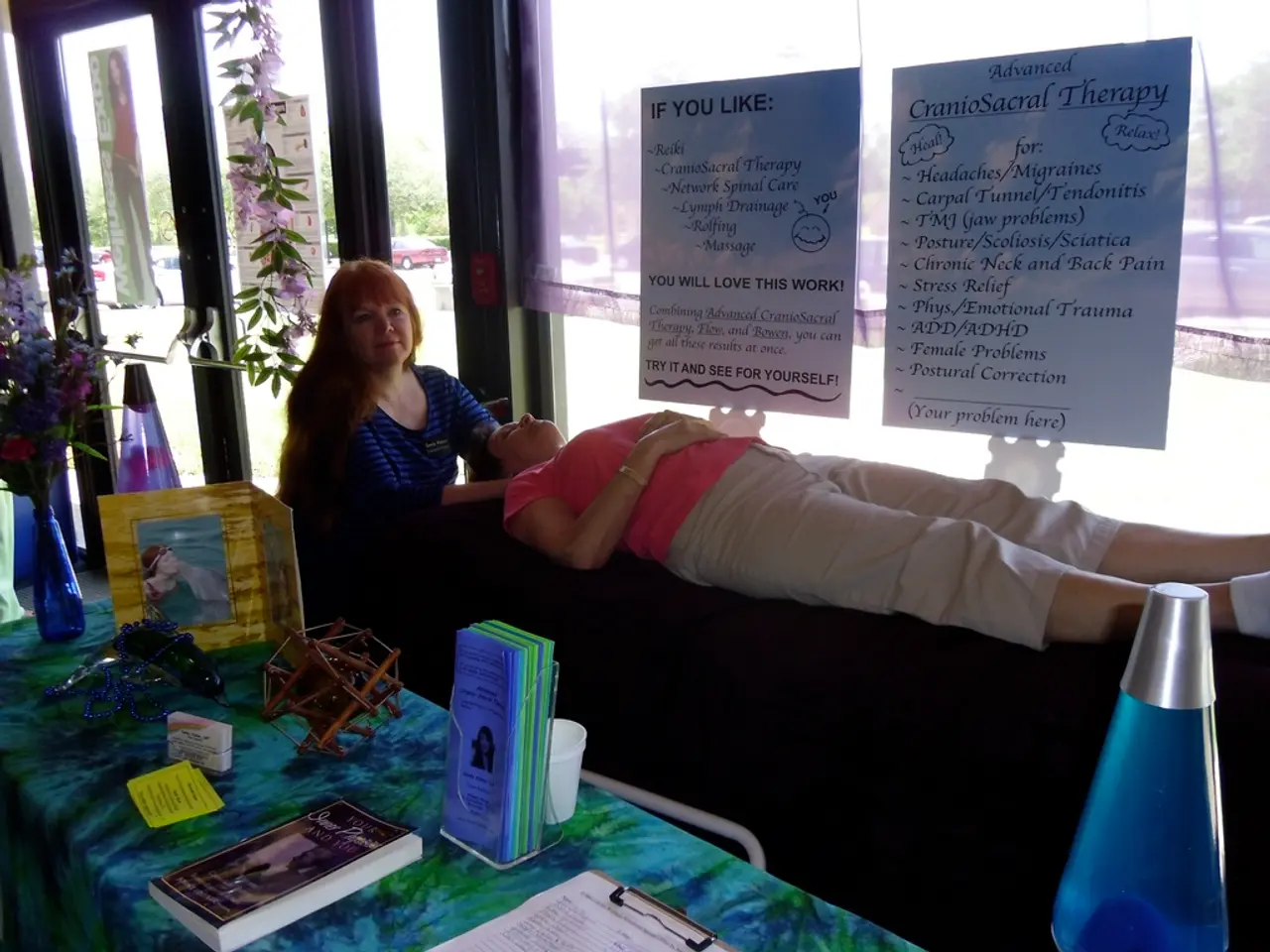Deep Depression With a Melancholy Tone: Recognizing Signs, Diagnosis, and Beyond
Melancholic depression, a debated subtype of major depressive disorder (MDD), is characterized by specific clinical features that set it apart from other forms of depression. While the Diagnostic and Statistical Manual of Mental Disorders, 5th edition (DSM-5) views melancholia as a specifier for MDD, some researchers argue for its classification as a distinct type of depression.
Melancholic depression is marked by symptoms such as profound anhedonia (loss of pleasure), psychomotor retardation or agitation, significant weight loss or appetite disturbance, excessive guilt, and a distinct quality of mood (often worse in the morning). These symptoms help differentiate it from other depression subtypes like atypical depression [1].
Scientific research continues to highlight the heterogeneity of MDD, involving multiple subtypes and symptom profiles with overlapping but distinct neurobiological underpinnings [1][3]. For melancholic depression, biological markers such as increased cortisol levels distinguish it from atypical depression and burnout, supporting its validity as a subtype with a distinct biological signature [2].
However, the dimensional approach favored in recent psychiatric research views melancholic depression as a severe expression on the continuum of depressive disorders rather than as a categorically distinct disease. This is supported by evidence of shared features across subtypes and overlapping brain-behavior patterns, despite some differences in symptom severity and neurobiology [1][3].
Despite the ongoing debate, the consensus acknowledges melancholic depression as a clinically and biologically relevant subtype within MDD, characterized by more severe symptoms and distinct biological markers, but not an entirely separate depressive disorder [1][2][3]. This subtype concept aids targeted treatment and prognosis considerations while recognizing the overall heterogeneity of depression.
Melancholic depression may have links to unique brain changes not observable in people with other forms of depression. Studies that consider melancholic depression distinct from clinical depression state that an individual may experience thoughts of suicide or death [4].
In terms of treatment, people with melancholic symptoms may respond better to antidepressant medications and Electroconvulsive Therapy (ECT) than placebos [4]. Common treatments for depression, including psychotherapy, regular exercise, good quality sleep, a balanced diet, avoiding or limiting alcohol, mood stabilizers, antipsychotics, Transcranial Magnetic Stimulation, Vagus Nerve Stimulation, the nasal spray Esketamine, and cognitive behavioral therapy, may also be beneficial [5].
If someone is experiencing suicidal thoughts or is in a severe state of emotional or mental distress, it is crucial to seek immediate help. Call emergency services or take them to the nearest hospital. Warning signs of suicide include talking about wanting to harm or kill oneself, talking about the desire to die or be dead, talking about feeling hopeless, empty, trapped, being a burden to others, or not having a reason to live, becoming withdrawn socially, engaging in behavior that can result in bodily harm or death, saying goodbye to family or friends, giving away prized or valuable possessions for no clear reason, misusing substances, experiencing intense mood swings, obtaining lethal weapons or stockpiling medications, showing rage or talking about getting revenge, and experiencing a severe state of emotional or mental distress [6].
The National Suicide Prevention Lifeline is available 24 hours per day at 800-273-8255. During a crisis, people who are hard of hearing can use their preferred relay service or dial 711 then 800-273-8255.
References:
[1] American Psychiatric Association. (2013). Diagnostic and Statistical Manual of Mental Disorders, 5th Edition. Arlington, VA: American Psychiatric Publishing.
[2] Keller, M. B., & Trivedi, M. H. (2000). The neurobiology of melancholic depression. Journal of Clinical Psychiatry, 61(Suppl 17), 4–11.
[3] Kendler, K. S., & Prescott, C. A. (2006). The genetics of major depression. Nature Reviews Genetics, 7(1), 35–45.
[4] Rush, A. J., Trivedi, M. H., Fawcett, J., Goldstein, D. B., Jamison, K. R., Judd, L. L., et al. (2006). The efficacy and effectiveness of new antidepressant drugs: a systematic review and meta-analysis of data submitted to the Food and Drug Administration. Journal of Clinical Psychiatry, 67(7), 950–966.
[5] National Institute of Mental Health. (2016). Depression. Retrieved from https://www.nimh.nih.gov/health/topics/depression/index.shtml
[6] National Suicide Prevention Lifeline. (2021). Warning signs. Retrieved from https://suicidepreventionlifeline.org/suicide-prevention-resources/warning-signs/
- Melancholic depression, with its distinct symptoms and biological markers, can be more severe than other forms of depression, potentially leading to thoughts of suicide or death.
- Individuals with melancholic depression may show a greater response to treatment options such as antidepressant medications and Electroconvulsive Therapy (ECT), compared to placebos.
- Mental health and wellness advocacy recognizes melancholic depression as a subtype of major depressive disorder (MDD), distinct from other subtypes, and this classification aids in targeted treatment and prognosis considerations.




